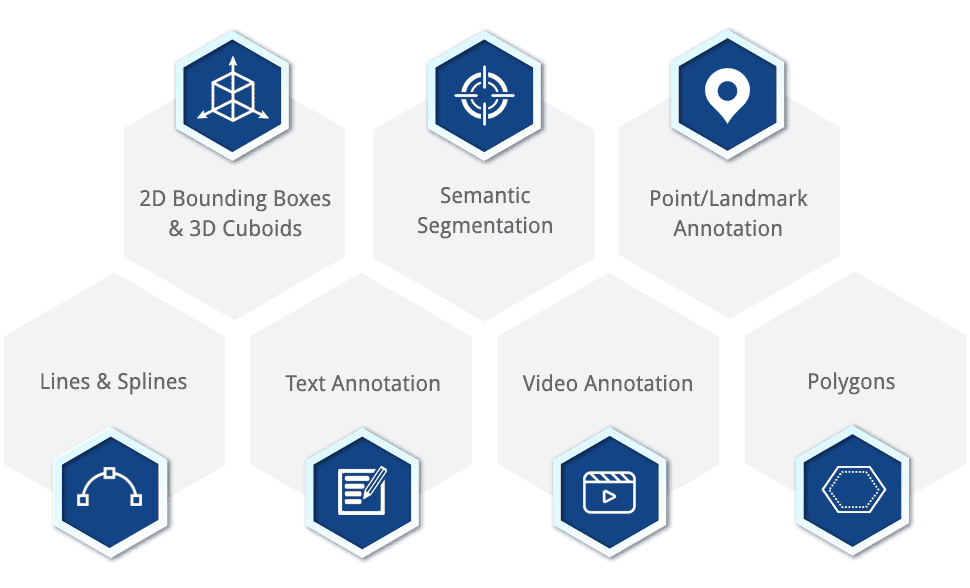AI IN BANK l LATEST IN 2024
AI in bank Operations Service
Artificial Intelligence (AI) has revolutionized various industries, and the banking sector is no exception. The integration of AI technologies in bank operations has brought about significant transformations, enhancing efficiency, improving customer experiences, and revolutionizing decision-making processes. In this article, we explore the role of operations and its impact on the future of banking.
Customerand Personalization:
AI-powered chatbots and virtual assistants have become essential tools in delivering exceptional customer . These intelligent systems can handle customer inquiries, provide real-time assistance, and offer personalized recommendations. By leveraging natural language processing and machine learning algorithms, AI enables banks to offer round-the-clock customer support, enhancing customer satisfaction and engagement.
Fraud Detection and Security:
AI plays a critical role in enhancing bank security and fraud detection. Machine learning algorithms analyze large volumes of data to detect patterns, anomalies, and potential fraud cases. AI systems can identify suspicious transactions, flag fraudulent activities, and promptly alert bank officials. This proactive approach to security ensures the protection of customer accounts and helps banks stay one step ahead of fraudsters.
Risk Assessment and Compliance:
AI algorithms enable banks to automate risk assessment processes and ensure compliance with regulatory requirements. Machine learning models can analyze vast amounts of data to identify potential risks, assess creditworthiness, and make informed lending decisions. AI systems also help banks monitor transactions for money laundering and other illicit activities, ensuring compliance with anti-money laundering (AML) and know-your-customer (KYC) regulations.
Efficient Data Analysis and Decision-Making:
Banks generate enormous volumes of data, and AI excels in analyzing and extracting insights from this data. AI algorithms can process and analyze data at a rapid pace, identifying trends, predicting customer behavior, and enabling data-driven decision-making. This enables banks to offer personalized product recommendations, optimize pricing strategies, and improve overall operational efficiency.
Process Automation:
AI technology streamlines bank operations by automating repetitive tasks and workflows. Robotic process automation (RPA) systems can perform routine tasks such as data entry, document processing, and report generation, freeing up human employees to focus on more complex and value-added activities. Process automation reduces errors, enhances operational efficiency, and accelerates turnaround times.
Enhanced Risk Management:
AI-powered risk management systems help banks assess and mitigate risks more effectively. Machine learning algorithms can analyze market data, customer behavior, and other relevant factors to predict and manage potential risks. These systems provide early warnings, identify vulnerabilities, and enable banks to proactively address risks, ultimately enhancing financial stability and resilience.
Improved Customer Insights and Marketing:
AI enables banks to gain deeper insights into customer behavior, preferences, and needs. By analyzing customer data and transaction history, AI algorithms can identify patterns, segment customers, and develop targeted marketing campaigns. This level of personalization enhances customer experiences, increases engagement, and boosts cross-selling and upselling opportunities.
AI technology has transformed bank , paving the way for a more efficient, secure, and customer-centric banking experience. From customer and fraud detection to risk assessment and decision-making, AI offers unprecedented opportunities to enhance operational efficiency and deliver personalized By harnessing the power of AI, banks can unlock valuable insights, streamline processes, and stay ahead of the competition in the fast-paced digital era. As AI continues to evolve, it will play an increasingly crucial role in shaping the future of banking, enabling banks to adapt to changing customer demands, mitigate risks, and deliver innovative solutions that meet the needs of the modern digital consumer.
How are Banks Best Capturing the AI Opportunity?
Artificial Intelligence (AI) has emerged as a game-changer for the banking industry, revolutionizing improving customer experiences, and driving innovation. To fully capitalize on the AI opportunity, banks are adopting various strategies and approaches. In this article, we explore how banks are best capturing the AI opportunity and leveraging its potential to transform the way they operate.
Building a Data-Driven Culture:
To effectively harness the power of AI, banks are prioritizing the development of a data-driven culture. They are investing in data infrastructure, data management, and data governance to ensure the availability of high-quality data. By leveraging advanced analytics and AI technologies, banks can derive valuable insights from vast amounts of data, enabling better decision-making, personalized customer experiences, and improved operational efficiencies.
Collaborating with Fintech Startups:
Banks are increasingly collaborating with fintech startups to access cutting-edge AI technologies and expertise. This collaboration allows banks to tap into the innovative capabilities of startups that specialize in AI solutions for the financial sector. By partnering with fintech companies, banks can accelerate their AI adoption, enhance their offerings, and deliver advanced solutions to their customers.
Implementing Robotic Process Automation (RPA):
Robotic Process Automation (RPA) is an integral part of banks’ AI strategies. RPA technology automates repetitive and rule-based tasks, freeing up employees to focus on higher-value activities. By implementing RPA, banks can streamline processes, reduce errors, enhance operational efficiency, and improve customer service. RPA also enables seamless integration with AI technologies, such as chatbots and virtual assistants, to deliver enhanced customer experiences.
Enhancing Customer Experiences with AI:
Banks are leveraging AI to deliver personalized and seamless customer experiences. Chatbots and virtual assistants powered by natural language processing (NLP) provide round-the-clock customer support, answer queries, and offer personalized recommendations. AI algorithms analyze customer data to understand preferences, anticipate needs, and provide tailored financial products and. By leveraging AI, banks can deliver exceptional customer experiences, enhance satisfaction, and build long-term customer loyalty.
Strengthening Security and Fraud Detection:
AI plays a crucial role in strengthening security and fraud detection in banking. Machine learning algorithms analyze vast amounts of data to detect patterns, anomalies, and potential fraud cases. AI systems can identify suspicious transactions, flag fraudulent activities, and prevent security breaches. By leveraging AI for security and fraud detection, banks can enhance customer trust, protect sensitive data, and ensure regulatory compliance.
Developing Advanced Risk Management Models:
Banks are leveraging AI to develop advanced risk management models. Machine learning algorithms analyze market data, customer behavior, and other relevant factors to predict and manage potential risks. AI-powered risk management systems provide early warnings, identify vulnerabilities, and enable banks to proactively address risks. This helps banks enhance financial stability, manage credit risks, and make data-driven risk management decisions.
Embracing Explainable AI and Ethical Practices:
As banks adopt AI, they are also embracing the importance of explainable AI and ethical practices. Explainable AI ensures that AI models and algorithms are transparent, enabling banks to understand how AI decisions are made. Ethical considerations are taken into account to ensure fairness, privacy, and compliance with regulations. By adopting explainable AI and ethical practices, banks build trust with customers, regulators, and stakeholders, fostering long-term relationships.
Banks are capitalizing on the AI opportunity by building a data-driven culture, collaborating with fintech startups, implementing RPA, and enhancing customer experiences. AI is transforming the way banks operate, from strengthening security and fraud detection to advancing risk management and improving operational efficiency. By leveraging AI technologies and embracing explainable AI and ethical practices, banks are at the forefront of innovation, delivering enhanced and experiences to their customers. The successful adoption of AI enables banks to remain competitive, drive growth, and navigate the rapidly evolving landscape of the financial industry.
Significant Banks are on the ball with regards to embracing AI banking as a business system – a fundamental assignment for any significant association looking for an edge over their rivals.
With the convergence between AI and account simply beginning, investigate how associations are utilizing AI in financial today, and what the appropriation of AI banking systems will mean for key parts of their tasks – to improve things.
Outstanding Applications of AI in Banking Today
Here are four significant use instances of AI and AI in financial tasks up until this point:
-
Client support
- Client support is a critical component of any business, regardless of its size or industry. It encompasses the processes and provided to clients to ensure their satisfaction, address their needs, and foster long-term relationships. In this article, we explore the importance of client support and how it drives business success.Customer Satisfaction and Loyalty:Effective client support is essential for ensuring customer satisfaction and building loyalty. When clients receive prompt and helpful support, it enhances their overall experience and strengthens their trust in the business. Satisfied clients are more likely to become loyal customers, repeat their business, and recommend the company to others. By prioritizing client support, businesses can foster long-term relationships and drive customer loyalty.
Problem Resolution and Conflict Management:Client support teams play a crucial role in resolving issues and managing conflicts. When clients encounter problems or have concerns, they need a responsive and efficient support system to address their issues promptly. Skilled support professionals are trained to handle difficult situations, listen to clients’ concerns, and work towards finding satisfactory resolutions. Effective problem resolution and conflict management build trust and demonstrate a commitment to client satisfaction.
Relationship Building and Trust:Strong client support contributes to relationship building and fosters trust between the business and its clients. Regular interactions and open communication with clients build a foundation of trust and credibility. Support professionals who demonstrate empathy, attentiveness, and professionalism can create a positive impression and establish strong connections with clients. These relationships form the basis for long-term partnerships and can lead to additional business opportunities.
Feedback and Continuous Improvement:Client support is an invaluable source of feedback for businesses. Support teams have direct interactions with clients, enabling them to gather insights into their experiences, preferences, and expectations. This feedback provides valuable information for businesses to identify areas for improvement and make necessary adjustments to their products, or processes. By actively seeking and acting upon client feedback, businesses can continuously enhance their offerings and deliver exceptional client experiences.
Upselling and Cross-Selling Opportunities:Well-executed client support opens doors to upselling and cross-selling opportunities. Support professionals who have a deep understanding of clients’ needs and preferences can identify opportunities to recommend additional products or that align with their requirements. By leveraging these opportunities, businesses can not only drive revenue growth but also enhance the value they provide to clients, further strengthening the client-business relationship.
Competitive Advantage:Providing exceptional client support sets businesses apart from their competitors. In today’s competitive landscape, customers have high expectations for support. By delivering timely, personalized, and knowledgeable assistance, businesses can differentiate themselves and gain a competitive advantage. Strong client support can become a key differentiating factor that attracts and retains clients in a crowded marketplace.
Business Growth and Referrals:Client support is closely tied to business growth. Satisfied clients are more likely to continue their business relationships and refer the company to others. Positive word-of-mouth referrals can generate new leads and expand the customer base. A reputation for outstanding client support can position a business as a trusted and reliable partner, attracting new clients and driving sustainable growth.
Client support plays a pivotal role in building strong relationships, driving customer satisfaction, and fostering business success. By prioritizing client support, businesses can create positive experiences, address client needs effectively, and build trust and loyalty. Exceptional client support not only ensures customer satisfaction but also leads to business growth, competitive advantage, and enhanced brand reputation. Investing in client support is a strategic decision that pays off in the long run, as it enables businesses to forge meaningful connections with clients and drive sustainable success.
Client support is a fundamental part of banking, and frequently has the greatest effect wherein bank a planned client picks. It’s obvious then that this is a region where banks are testing the most with to upgrade client connections and improve the general client bank association.
Conversational AI is now changing financial client support as accommodating chatbots, which give a more customized on the web and portable financial experience for the client.
Probably the greatest player on this side of the AI in financial scene is Bank of America’s Erica, the first generally accessible remote helper for use in the bank’s portable application.
Remote helpers, supported by AI, utilize prescient investigation to decide the correct pathways to coordinate clients and smooth the way toward drawing in with the bank.
Clients can connect with these AI banking bots through messaging or tapping through orders on their screens.
-
Extortion Prevention and Security
Extortion is a growing threat in today’s digital landscape, with cybercriminals using various tactics to exploit businesses and individuals for financial gain. Extortion can take many forms, including ransomware attacks, blackmail, and online scams. Prevention and security measures are crucial in protecting against such threats and minimizing the risk of extortion. In this article, we explore the importance of extortion prevention and security and the measures that can be taken to safeguard businesses and individuals.
Cybersecurity Awareness:
Building cybersecurity awareness is the foundation of extortion prevention. Educating employees and individuals about the risks of extortion, common attack vectors, and best practices for online security is essential. This includes training on recognizing phishing emails, avoiding suspicious websites, and implementing strong password policies. Increased awareness helps create a security-conscious environment where individuals are better equipped to identify and mitigate potential threats.
Robust Security Measures:
Implementing robust security measures is crucial in protecting against extortion attempts. This includes deploying up-to-date antivirus software, firewalls, and intrusion detection systems. Regular software updates and patches should be applied to fix vulnerabilities that cybercriminals may exploit. Encryption of sensitive data and the use of secure protocols for data transfer are also essential. Layered security measures provide multiple lines of defense, making it more challenging for cybercriminals to breach systems.
Data Backup and Recovery:
Regular data backup is an important component of extortion prevention. Ransomware attacks, in which cybercriminals encrypt data and demand a ransom for its release, can be mitigated by maintaining secure backups of critical data. Regularly backing up data to offline or cloud storage ensures that data can be restored without paying the ransom. Organizations and individuals should establish backup protocols that include regular testing to ensure the integrity and availability of backup data.
Incident Response and Business Continuity Planning:
Preparing for potential extortion attempts is crucial for minimizing their impact. Developing an incident response plan and a comprehensive business continuity strategy helps organizations respond effectively to incidents and minimize disruption to. These plans should include procedures for isolating and containing threats, engaging appropriate security professionals, and communicating with stakeholders in the event of an extortion attempt.
Employee Training and Vigilance:
Employees are often the first line of defense against extortion attempts. Providing comprehensive training to employees on security practices, recognizing suspicious activities, and reporting potential threats can greatly enhance an organization’s security posture. Encouraging employees to be vigilant, report any suspicious incidents, and follow security protocols contributes to a proactive security culture that helps identify and respond to extortion attempts early on.
Regular Security Audits and Assessments:
Conducting regular security audits and assessments is essential to identify vulnerabilities and gaps in security. This includes penetration testing to evaluate the effectiveness of security measures, identifying potential entry points for attackers, and addressing weaknesses. Regular audits help organizations stay one step ahead of cybercriminals by identifying and addressing vulnerabilities before they are exploited.
Collaboration and Information Sharing:
Collaboration and information sharing within the business community and among industry peers are crucial in combating extortion attempts. Sharing information about emerging threats, attack techniques, and best practices enables organizations to better prepare and protect themselves. Participating in industry forums, sharing threat intelligence, and collaborating with law enforcement agencies and cybersecurity professionals enhances the collective defense against extortion.
Extortion prevention and security are critical in safeguarding businesses and individuals from the growing threat of cybercrime. By raising cybersecurity awareness, implementing robust security measures, and establishing effective incident response plans, organizations can minimize the risk of falling victim to extortion attempts. Ongoing employee training, regular security audits, and collaboration with industry peers contribute to a proactive and resilient security posture. By prioritizing extortion prevention and security, businesses and individuals can protect their assets, maintain trust, and mitigate the potentially devastating consequences of extortion attacks.
Fraud, extortion, and security penetrates are basic to the financial area because of the delicate individual information and cash included.
Information security is basic to an effective bank activity and keeping up client trust.
Normally, associations use AI banking that can recognize extortion rapidly and all the more precisely, without the danger of human mistake neglecting any information or misconception designs.
Computer based intelligence is likewise being utilized to validate and distinguish clients when they draw in with their bank.
With stores of individual information to ensure, banks are moreover putting resources into AI as a network safety apparatus to more readily forestall future cyber attacks.
Venture portfolios are normally overseen by a monetary counsel or by the actual client.
Man-made intelligence in banking is moving away from that model by enhancing human choices with more complete and precise investigations and hazard evaluation, serving to eventually boost the estimation of the portfolio.
AI can help extend portfolios too by checking the worldwide market for new venture openings, offering constant information to advice choices, and giving a fast feeling of market estimations all throughout the planet.
Credit and advance choices have truly been made through human examination of FICO ratings, record as a consumer, and other past practices.
This is definitely not a careful science, and banks frequently lose cash due to having erroneous or missing information in the data set, or because of human blunder.

 Afrikaans
Afrikaans Albanian
Albanian Amharic
Amharic Arabic
Arabic Armenian
Armenian Azerbaijani
Azerbaijani Basque
Basque Belarusian
Belarusian Bengali
Bengali Bosnian
Bosnian Bulgarian
Bulgarian Catalan
Catalan Cebuano
Cebuano Chichewa
Chichewa Chinese (Simplified)
Chinese (Simplified) Chinese (Traditional)
Chinese (Traditional) Corsican
Corsican Croatian
Croatian Czech
Czech Danish
Danish Dutch
Dutch English
English Esperanto
Esperanto Estonian
Estonian Filipino
Filipino Finnish
Finnish French
French Frisian
Frisian Galician
Galician Georgian
Georgian German
German Greek
Greek Gujarati
Gujarati Haitian Creole
Haitian Creole Hausa
Hausa Hawaiian
Hawaiian Hebrew
Hebrew Hindi
Hindi Hmong
Hmong Hungarian
Hungarian Icelandic
Icelandic Igbo
Igbo Indonesian
Indonesian Irish
Irish Italian
Italian Japanese
Japanese Javanese
Javanese Kannada
Kannada Kazakh
Kazakh Khmer
Khmer Korean
Korean Kurdish (Kurmanji)
Kurdish (Kurmanji) Kyrgyz
Kyrgyz Lao
Lao Latin
Latin Latvian
Latvian Lithuanian
Lithuanian Luxembourgish
Luxembourgish Macedonian
Macedonian Malagasy
Malagasy Malay
Malay Malayalam
Malayalam Maltese
Maltese Maori
Maori Marathi
Marathi Mongolian
Mongolian Myanmar (Burmese)
Myanmar (Burmese) Nepali
Nepali Norwegian
Norwegian Pashto
Pashto Persian
Persian Portuguese
Portuguese Punjabi
Punjabi Romanian
Romanian Russian
Russian Polish
Polish Samoan
Samoan Scottish Gaelic
Scottish Gaelic Serbian
Serbian Sesotho
Sesotho Shona
Shona Sindhi
Sindhi Sinhala
Sinhala Slovak
Slovak Slovenian
Slovenian Somali
Somali Spanish
Spanish Sundanese
Sundanese Swahili
Swahili Swedish
Swedish Tamil
Tamil Tajik
Tajik Telugu
Telugu Turkish
Turkish Ukrainian
Ukrainian Urdu
Urdu Uzbek
Uzbek Thai
Thai Vietnamese
Vietnamese Welsh
Welsh Xhosa
Xhosa Yiddish
Yiddish Yoruba
Yoruba Zulu
Zulu